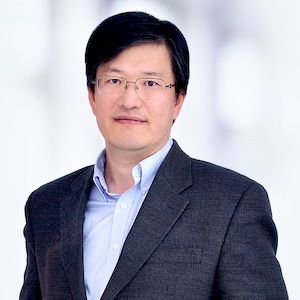Selective Retina Therapy Aids Real-World Outcomes in Central Serous Chorioretinopathy
Over 24 months in a real-world study, selective retina therapy with real-time feedback-controlled technology achieved anatomical improvements in eyes with CSC.
Hyeong Gon Yu, PhD
Credit: Seoul National University Hospital

A new study provided insight into the safety and efficacy of selective retina therapy (SRT) with real-time feedback-controlled (RTF) technology in the treatment of central serous chorioretinopathy (CSC) over a 24-month follow-up period.1
Insights from the real-world analysis showed a significant improvement in central retinal thickness (CRT) and subretinal fluid (SRF) height, with complete SRF resolution observed in more than half (62%) of treatment eyes at the 6-month mark after treatment.
“These findings suggest that SRT should be considered as a treatment modality for patients with CSC in real-world practice,” wrote the investigative team, led by Hyeong Gon Yu, PhD, of the department of ophthalmology at Seoul National University Hospital.
Various treatments are clinically indicated for CSC, including intravitreal anti-vascular endothelial growth factor (VEGF), laser photocoagulation, and oral administration of mineralocorticoid receptor antagonists – however, a standardized real-world treatment has not determined due to adverse event risk and questionable treatment efficacy.2
To avoid damage to the photoreceptors, SRT may serve as an alternative approach to conventional photocoagulation lasers by selectively targeting retinal pigment epithelium (RPE) cells. Treatment response is not visible, however, so RTF technology may ensure the therapeutic effect of SRT. Yu and colleagues noted recurrent and chronic CSC leading to visual impairment are common, making longer follow-up periods critical for observational studies.
The investigative team conducted a long-term, real-world evaluation of the efficacy and safety of SRT for the treatment of CSC, with a follow-up period of up to 24 months. The study recruited 50 patients (53 eyes) with CSC and a more than 1-month symptom duration. Participants were treated with SRT using a 1.7 µs pulse width and 527 nm laser equipped with an RTF system.
At screening, participants underwent ophthalmological examination, including best-corrected visual acuity (BCVA), color fundus photography, slit-lamp biomicroscopy, fundus autofluorescence, and optical coherence tomography (OCT). Each examination was repeated at follow-up visits every three months from treatment. The analysis estimated CRT using the OCT images, while the peak SRF height was the highest SRF height of all OCT B scans.
After a single exclusion due to follow-up failure, the efficacy analysis included 52 eyes of 49 patients in the intention-to-treat cohort. Participants had a mean age of 50.7 years; 44 patients presented with chronic disease (89.8%), and 5 presented with acute disease (10.2%), with symptom durations ranging from 1 to 217 months.
Regarding the primary outcome, the mean BCVA significantly improved from 0.15 ± 0.18 logMar at baseline to 0.11 ± 0.17 at 3 months (P = .017) but slightly improved to 0.12 ± 0.21 at 6 months (P = .062). In comparison to BCVA, investigators identified a significant improvement in CRT from 350.6 ± 100.1 µm at baseline to 268.2 ± 70.6 µm at 6 months (P <.001). Similar to the CRT changes, the mean peak SRF height improved significantly from 152.1 ± 86.1 µm at baseline to 63.4 ± 76.2 µm at 6 months (P <.001).
Yu and colleagues found complete SRF resolution in 62% of eyes (32 eyes) at 6 months of treatment. In examining long-term treatment effects, the team found significant improvements in BCVA from 9 months until 24 months (0.09 ± 0.21 logMAR), as well as CRT from 1 month until 24 months (259 ± 70 µm) (P <.001). Meanwhile, SRF resolution was achieved in 30 eyes at the last visit, elevating the resolution rate to 67% from 62% at 6 months.
According to linear regression analysis, no significant association existed between symptom duration and treatment outcomes. However, the analysis showed a significant correlation between the reduction in peak SRF height and BCVA improvement at 6 months (r = –.357; P = .009). Yu and colleagues previously hypothesized patients with a higher SRF height would exhibit greater odds of reduced visual acuity, leading to a more significant improvement in BCVA with a greater SRF height reduction.
“The correlation between SRF height change and BCVA improvement highlights the importance of structural restoration, which contributes to functional visual improvement,” investigators wrote.
References
- Yoon CK, Yu HG. Selective retina therapy with real-time feedback- controlled technology in central serous chorioretinopathy: a 24-month follow-up real- world prospective study. BMJ Open Ophthalmology 2024;9:e001517. doi:10.1136/ bmjophth-2023-001517
- van Rijssen TJ, van Dijk EHC, Yzer S, et al. Central Serous chorioretinopathy: towards an evidence-based treatment guideline. Prog Retin Eye Res 2019;73:100770. doi:10.1016/j.preteyeres.2019.07.003